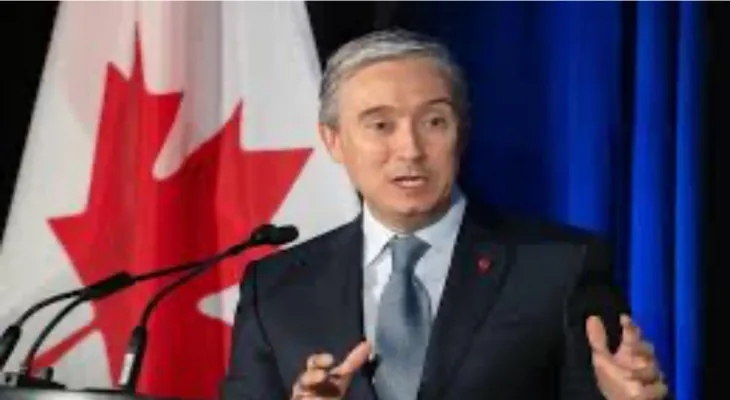Search here
Newspaper
Search here

Arab Canada News
News

Published: July 8, 2025
Canadian Finance Minister François-Philippe Champagne asked his cabinet colleagues on Monday to submit “ambitious” proposals to reduce spending to rein in public sector expenditures, according to a senior government official.
Champagne will lead what he called a “comprehensive review of expenditures,” seeking to cut the daily spending of the federal government and to allow for redirecting funds toward initiatives aimed at building a “strong and united Canadian economy,” as stated in the text of the letter sent to ministers.
Champagne's communications director, Audrey Mele, confirmed the content of the letter to CBC, explaining that ministers were asked to prepare plans to reduce government program spending by 7.5% during the fiscal year starting next April, then 10% the following year, and 15% by 2028-2029.
Mele said: “This is not an exercise in laying off employees, but we really want to rebalance the public sector.” However, observers warned that this trend could lead to job losses as employees retire or leave voluntarily, which could anger unions.
In an interview with CBC's Power & Politics program, Minister of Transport and Internal Trade Chrystia Freeland stated that the review aims to fulfill “our promise to spend less on government itself so that we can invest more in Canada and Canadians.”
She clarified that the savings will be used for “significant investments to enhance the productive capacity of the Canadian economy,” including developing new trade corridors and infrastructure projects, as Prime Minister Mark Carney seeks to bolster the economy in the face of a trade war with the U.S. that has caused job losses and decreased exports.
Freeland added that social programs, such as dental care, early childhood education, child care, and financial transfers to provinces, “will not be affected” under the spending reduction plans.
It is worth noting that the cost of operating the federal government rose during the previous Liberal government by an average of 9% annually, a rate that outpaced revenue growth and contributed to a rising deficit and inflated national debt.
Carney had pledged during his election campaign to cap spending growth at 2% annually until the fiscal year 2028-2029.
According to government data, the number of federal government employees (including those working in “core public administration” and independent agencies) rose from 257,034 in 2015 to 357,965 this year — an increase of 40%, which is more than double the population growth rate during the same period.
The government is also considering expanding the use of artificial intelligence within departments, something Carney agreed upon with G7 leaders in their recent statement on artificial intelligence, which may affect the future of government jobs.
As part of the restructuring of the budget preparation process, each department will be required to identify three key priorities for the upcoming fall budget, along with a plan for how to fund them from existing resources under a “pay for what you spend” model proposed by Conservative Leader Pierre Poilievre during the last elections.
Departments will be allowed to propose additional budget items, as long as they align with the seven government priorities identified by Carney in his mandate letter to ministers early this year, which include:
Establishing a new economic and security relationship with the United States
Building a “unified Canadian economy” by removing internal trade barriers
Comments